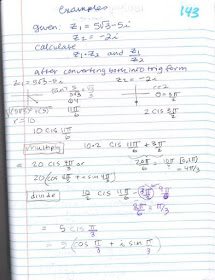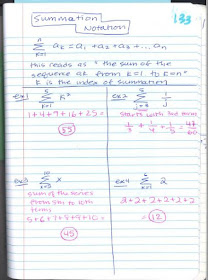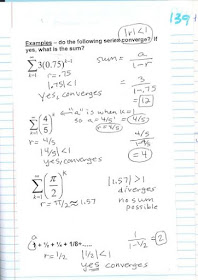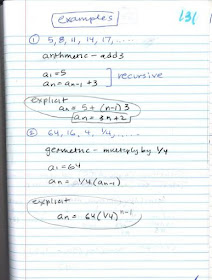

A reflective post today.
I am just finishing my third year of using interactive student notebooks in my classes.
How are they working? Do I like using them? Do students like them? Do students find them useful?
Yes, I think the interactive notebooks are a success in my classes. Over the three years I've made some adjustments from what I've found on line to match my style and what I think it useful for students. I use them in my two advanced classes - Algebra One and Pre-Calculus. The students mostly love them. There were some groans from some of my students in PreCalculus at the beginning of this year. But even those "groaners" got into doing them and keeping them up to date. Of the 70 students who used these notebooks this year only one student did not keep up with it (a struggling student in my precalculus class).
Now that I've done three years of ISNs I have a pretty good file of foldables to use for each class. I've worked hard this year to update them, both before and after using them if necessary. That way any changes I want for 2017-2018 were fresh in my mind for my updating.
I like how the ISNs fit into my instruction. I do have a block schedule (82 minutes) with Algebra One meeting every day and PreCalculus meeting every other day.
My general approach is to first go through a concept with students the usual way - either with some discovery, whole group examples or guided individual work. Then I use the ISN to summarize the concept with some practice after the summary (usually on the page opposite).
What I LOVED seeing this year during our exam review days was students actually accessing the information in their notebooks. They were looking topics up in their table of contents and referring to them as they did problems in the exam study guide. Seeing that happening throughout our three days of exam review in Algebra One was wonderful! I actually had to do very little whole group re-teaching and review. Now, of course, I haven't scored the exams yet. But at least I saw students actively and productively using them.
I've tried a few different approaches to the Table of Contents and for me the best approach is the most basic. At the start of the year students label the first 4-6 pages as TABLE OF CONTENTS (TOC for short). And we fill in it as we go. Every day I post on the board "TOC update" with the latest page numbers and topics for them to fill in.
I stopped being fancy with my inside cover too. There I just put a summary syllabus and the kids create a title page.




On the inside back cover, I have the students glue in a 6 by 9 manilla envelope for any foldables that we don't quite finish in class. I'm gong to keep that (for my algebra one students).
I do not use them in my low level Applied Algebra One class. I tried them my first year and it did not work out. That class has quite a bit of absenteeism and that gets very difficult with keeping up in the notebook. However I think I will try again next year but really scale it down. Currently in my Applied Algebra One class I maintain a notebook checklist system with the students (which I will continue as it helps keep the notebooks organized). In that system we would have a page of summary notes at various times in a chapter. What I would do instead now is do that summary in our ISN. The main reason is that I do not see my Applied Algebra students accessing those notes in their notebook when they do problems. So I am going to see how it works to maintain an ISN of the basics in each chapter. I am going to have them keep their ISN in the classroom unless they want to take it home to help with their work. I imagine the conscientious ones will take them home and use them. Those who won't use them will leave them in my room (and then they won't get lost!). Also when a student is absent I'll be able to insert the missing foldables in their notebook as they will have kept the ISN in my classroom. We'll see.... I'll report back on how this goes next year in June 2018.
My goal on this blog is to finish posting some of my precalculus pages this summer. Then in the 2017-2018 school year post my updated pages in my Algebra One notebook as I teach them. I did do some new things this last year and may tweak them even more this coming year.










































